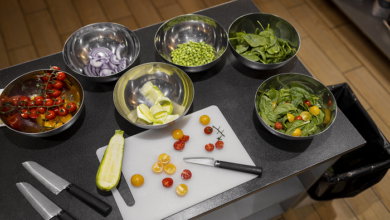The Flavor: The Sensory Experience of Food and Beverages

The flavor is the combination of taste and aroma that we experience when we eat or drink something. It is a complex phenomenon that involves multiple senses, including taste, smell, and texture. The flavor of a food or beverage is determined by a combination of factors, including the chemical composition of the food, the way it is prepared, and the way it is consumed.
Taste
Taste is the primary sense involved in flavor perception. The human tongue can detect five basic tastes: sweet, sour, salty, bitter, and umami (savory). These tastes are detected by specialized receptors on the tongue that are sensitive to specific chemical compounds found in food and drink. For example, sweet tastes are detected by receptors that are sensitive to sugars, while sour tastes are detected by receptors that are sensitive to acidity.
Smell
Smell, or olfaction, plays a crucial role in flavor perception. The human nose can detect thousands of different odors, which are detected by specialized receptors in the nose. When we eat or drink, the aroma molecules are released into the air and are detected by these receptors, which send signals to the brain. The brain then combines the information from the taste receptors on the tongue and the odor receptors in the nose to create the perception of flavor.
Texture
The texture is another important aspect of flavor. The texture of a food or beverage can greatly influence the overall flavor experience. For example, a creamy texture can make a food taste sweeter, while a crunchy texture can make a food taste fresher. Texture can also affect the perceived temperature of a food or drink, with smooth textures often perceived as being cooler than rough textures.
Preparation
The way a food or beverage is prepared can greatly affect its flavor. Cooking methods, such as grilling, roasting, and sautéing, can bring out different flavors in food. For example, grilling can bring out a smoky flavor in meats, while roasting can bring out a sweeter flavor in vegetables. Spices and herbs can also be used to enhance the flavor of a food or beverage.
Consumption
The way a food or beverage is consumed can also affect the overall flavor experience. For example, the temperature of a food or drink can greatly influence the perceived flavor. A cold drink can taste sweeter than a warm drink, while hot food can taste more savory than cold food. The environment in which a food or beverage is consumed can also affect the flavor experience. For example, the ambiance of a fine dining restaurant can greatly enhance the flavor of a meal.
The flavor is a complex and multi-sensory experience that is determined by a combination of factors, including taste, smell, texture, preparation, and consumption. Understanding these factors can help us better appreciate and enjoy the flavors of food and beverages. Whether you’re a professional chef or a casual home cook, experimenting with different techniques and ingredients can help you create delicious and satisfying meals that are sure to please the taste buds.
Read more about: forexfactoryhub




